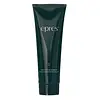What's inside
What's inside
 Key Ingredients
Key Ingredients

 Benefits
Benefits

 Concerns
Concerns

 Ingredients Side-by-side
Ingredients Side-by-side

Water
Skin ConditioningAloe Barbadensis Leaf Juice
Skin ConditioningLauryl Glucoside
CleansingCocamidopropyl Betaine
CleansingGlycerin
HumectantSodium Lauroyl Glutamate
Coco-Glucoside
CleansingCitric Acid
BufferingSodium Chloride
MaskingGlyceryl Oleate
EmollientXylitylglucoside
HumectantSodium Cocoamphoacetate
CleansingAnhydroxylitol
HumectantSodium Benzoate
MaskingMaris Sal
Skin ConditioningPropanediol
SolventXylitol
HumectantPotassium Sorbate
PreservativeSodium Gluconate
Skin ConditioningGlucose
HumectantHydrolyzed Rice Protein
Skin ConditioningMangifera Indica Fruit Extract
Skin ConditioningRubus Chamaemorus Fruit Extract
AntioxidantOlea Europaea Leaf Extract
PerfumingParfum
MaskingCI 60730
Cosmetic ColorantWater, Aloe Barbadensis Leaf Juice, Lauryl Glucoside, Cocamidopropyl Betaine, Glycerin, Sodium Lauroyl Glutamate, Coco-Glucoside, Citric Acid, Sodium Chloride, Glyceryl Oleate, Xylitylglucoside, Sodium Cocoamphoacetate, Anhydroxylitol, Sodium Benzoate, Maris Sal, Propanediol, Xylitol, Potassium Sorbate, Sodium Gluconate, Glucose, Hydrolyzed Rice Protein, Mangifera Indica Fruit Extract, Rubus Chamaemorus Fruit Extract, Olea Europaea Leaf Extract, Parfum, CI 60730
Ingredients Explained
These ingredients are found in both products.
Ingredients higher up in an ingredient list are typically present in a larger amount.
Cocamidopropyl Betaine is a fatty acid created by mixing similar compounds in coconut oil and dimethylaminopropylamine, a compound with two amino groups.
This ingredient is a surfactant and cleanser. It helps gather the dirt, pollutants, and other impurities in your skin to be washed away. It also helps thicken a product and make the texture more creamy.
Being created from coconut oil means Cocamidopropyl Betaine is hydrating for the skin.
While Cocamidopropyl Betaine was believed to be an allergen, a study from 2012 disproved this. It found two compounds in unpure Cocamidopropyl Betaine to be the irritants: aminoamide and 3-dimethylaminopropylamine. High-grade and pure Cocamidopropyl Betaine did not induce allergic reactions during this study.
Learn more about Cocamidopropyl BetaineCoco-Glucoside is a surfactant, or a cleansing ingredient. It is made from glucose and coconut oil.
Surfactants help gather dirt, oil, and other pollutants from your skin to be rinsed away.
This ingredient is considered gentle and non-comedogenic. However, it may still be irritating for some.
Learn more about Coco-GlucosideLauryl Glucoside sugar- and lipid-based cleansing agent. It is created from glucose and lauryl alcohol.
This ingredient is a surfactant, making it easier to rinse oil, dirt, and other pollutants away.
A British study found lauryl glucoside to cause skin sensitivity for some people. We recommend speaking with a professional if you have concerns.
Other names for this ingredient include "Lauryl Polyglucose", "Lauryl glycoside", and "D-Glucopyranoside".
Learn more about Lauryl GlucosidePropanediol is an all-star ingredient. It softens, hydrates, and smooths the skin.
It’s often used to:
Propanediol is not likely to cause sensitivity and considered safe to use. It is derived from corn or petroleum with a clear color and no scent.
Learn more about PropanediolWe don't have a description for Sodium Cocoamphoacetate yet.
Water. It's the most common cosmetic ingredient of all. You'll usually see it at the top of ingredient lists, meaning that it makes up the largest part of the product.
So why is it so popular? Water most often acts as a solvent - this means that it helps dissolve other ingredients into the formulation.
You'll also recognize water as that liquid we all need to stay alive. If you see this, drink a glass of water. Stay hydrated!
Learn more about Water